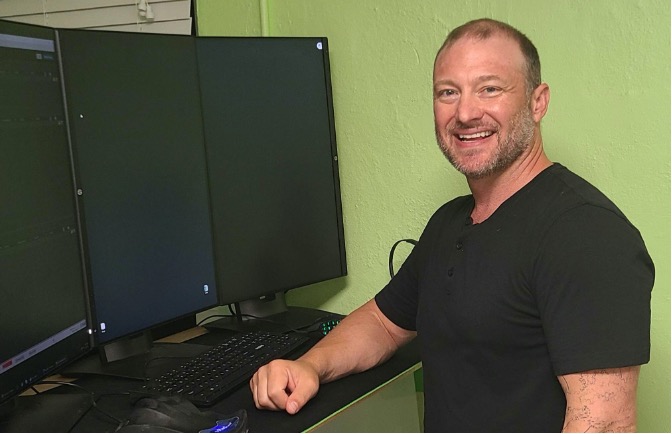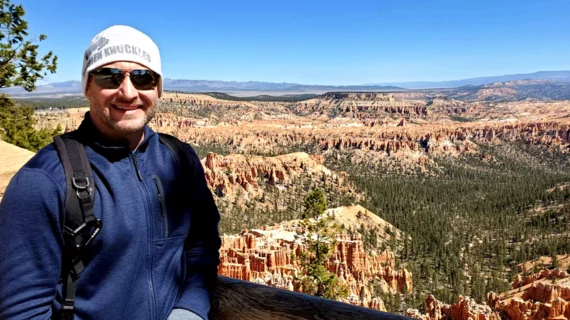6 tips for radiologists to reduce burnout and redefine the path to retirement
When you’re a radiologist, your work isn’t just what you do—it’s who you are.
The career is all-consuming; if you follow a traditional path in private practice, you simply have to come to terms with the fact that you’ll devote your life to it—and for nine years, I did.
But when I found myself approaching 40 and already feeling burned out—and Googling around to see whether maybe I could become a history teacher instead of a radiologist—I began to wonder why there weren’t options where I could put my hard-earned skills as a radiologist to use without being exhausted all the time or counting down the days to retirement.
I didn’t want to leave radiology completely, but I did want to turn the dial down a little bit. And I wanted to do it soon. After talking with friends who felt the same way, I came across a promising option: teleradiology. While I had previously thought that remote reading was only for rads who were already in or near retirement, I learned that it also could be a path to a full and successful career, minus the burnout.
Seeking a better option was the beginning of a journey that led me to where I am today: reading remotely with vRad six hours a day, 7-on-7-off, and pursue hobbies—hobbies!—in my free time. Even more, this fall, at age 45, I am scheduled to further reduce my work week from 42 to 34 hours.
Five years into teleradiology, I encourage all radiologists—even those just beginning their careers—to think about where and how they practice. Stop and ask yourself whether your current position is sustainable enough to take you right into retirement.
If it’s not, take a look at these tips to redefine the way you think about retirement and seek out a realistic path that will get you there:
Break out of the binary.
Don’t fall into the trap that you can either have an all-consuming career or nothing; always remember that there is a middle ground. Balance, we all need and we can all find it. With that in mind, try to stop thinking about your career as having two phases: first you work yourself to the bone, and then you retire. Instead of that “all or nothing” approach, find your own dial. There will inevitably be times in your life where you can devote yourself to work. But there also will be times when you’d rather pursue a hobby or see your child’s soccer games than get a bigger paycheck. Find a position that lets you step back and step into life, without stepping out.
There will inevitably be times in your life where you can devote yourself to work. But there also will be times when you’d rather pursue a hobby or see your child’s soccer games than get a bigger paycheck. Find a position that lets you step back and step into life, without stepping out.
Be your own judge.
It’s hard to keep from comparing yourself to your colleagues and former classmates. Sometimes, though, we make the mistake of equating how miserable we are with how successful we are, wearing our exhaustion as a badge of pride that demonstrates our importance.
I’m so glad that the stigma surrounding teleradiology has been shattered as we experience a collective reckoning about the importance of work-life balance. There’s more to life than work, and the only person you need to answer to is yourself.
Look for flexibility.
Everyone defines flexibility differently. For me, it means working from home so that I can avoid the exhausting day-to-day commute. It’s also the ability to take care of a sick kid when I need to, and the free time to pursue other interests on the side.
The free time I’ve had in the five years since I moved from private practice to vRad has been so invigorating. I’ve renewed my interest in old coins and became a certified numismatic scholar. I’m in the process of becoming a certified retirement coach, and I’m a fully engaged husband and father.
Figure out what flexibility looks like to you and find an employer that’s willing to work with you to give you those options.
Seek out a set, predictable schedule.
To me, even more than the crazy hours, the unpredictable schedules that ruin plans are one the most difficult aspects of working in medicine. I can still remember trying to make a dentist appointment and realizing that I had no idea what my schedule would be on a specific date six months away.
If you can’t remember the last time you’ve been able to schedule something in advance, and know without a doubt that you’d actually be able to make it, it might be time to seek a different path.
With vRad, I have a say in my schedule, and it’s built into my contract. So I know exactly when I’ll be at work and when I’ll be available. Of course, if something comes up, as things tend to, they also are incredibly helpful in adjusting my shift or allowing for time off when needed outside of my scheduled days off.
Find a practice that allows you to just read images.
Today, being a radiologist at a traditional practice involves a whole lot more than reading. From administrative responsibilities to office politics, many radiologists find that the higher up they climb, the less time they actually get to spend reading imaging studies.
Sometimes burnout is less about how many hours you spend at work, and more about what you do during those hours. If you’re doing what you enjoy—reading images that you know will have an impact on patients’ lives—the time will go by more quickly.
The way I see it, one of the benefits of reading remotely is that I’m shielded from so many of the outside tasks. That allows me to fully devote myself to providing good reads.
Don’t let your age define you.
It’s never too early or too late to make a change, and there’s no hard-and-fast rule that you need to make a certain career move at a certain age. Most of all, remember that getting to retirement is a marathon, not a sprint. If you push too hard while you’re in the middle of the race, you’ll never be able to cross the finish line. I’m so glad that I slowed down when I did.
So five years in and about to be an empty nester, I’m looking forward to what’s next.
I’ve stopped thinking about a radiology career as having an “on/off” switch, where you work so hard that you’re missing out on the rest of your life and then suddenly stop working as soon as you reach a certain birthday. Instead, I really do think of it as a dial: I can dial down a little bit over the years as I need to, while still enjoying fulfilling radiology work—as well as a rich life outside of it.
Will I ever turn the dial down to zero and fully retire? Honestly, I’m not sure. I really enjoy my current setup, and I can see myself doing this for a long time. But I do know this: whether I’m working six hours, four hours, or zero hours a day, I’m glad to be living a life where I define myself by who I am—not what I do.
I love talking to radiologists who are looking to plan a sustainable path to retirement and avoid burning out before they get there. If you want to speak to me about a potential career at vRad, get in touch with a vRad recruiter here and ask them to put us in contact.
